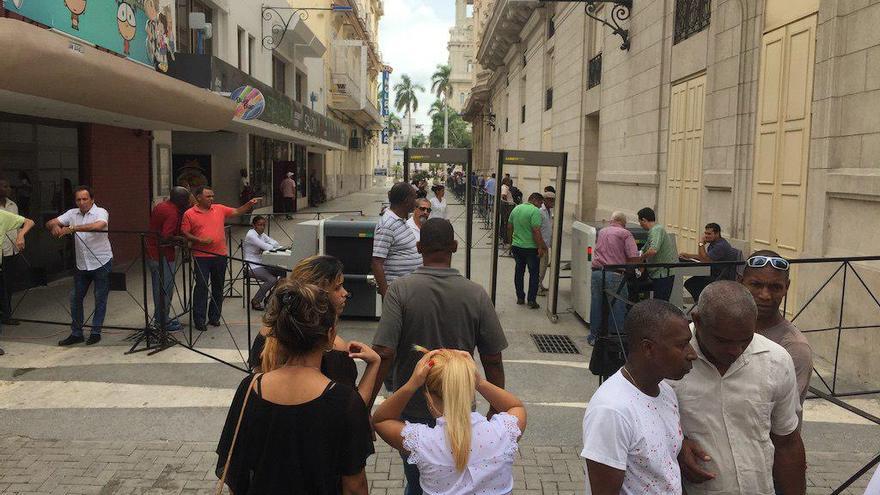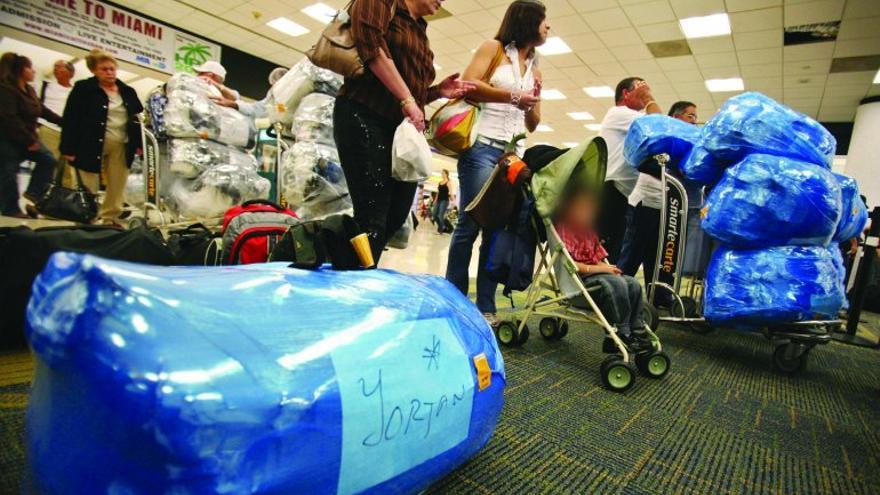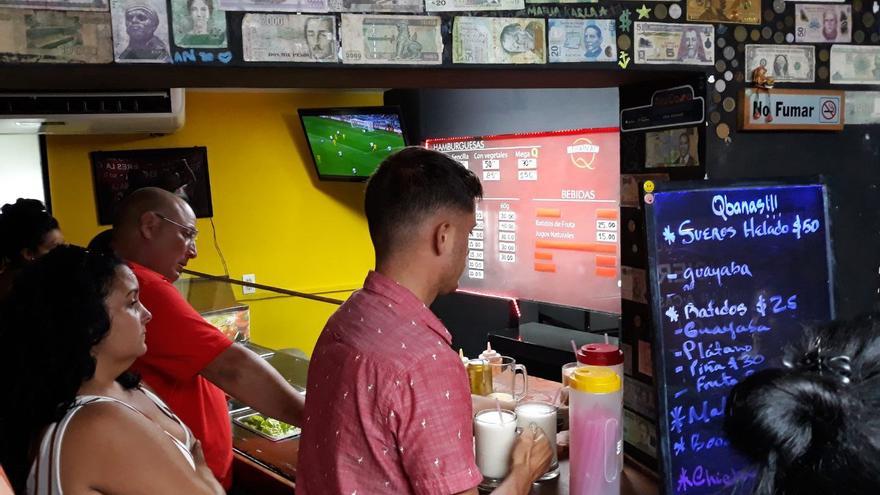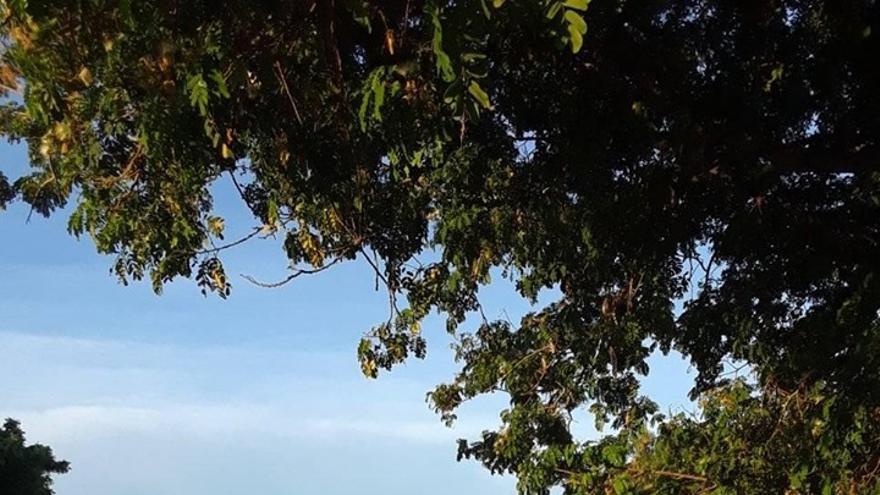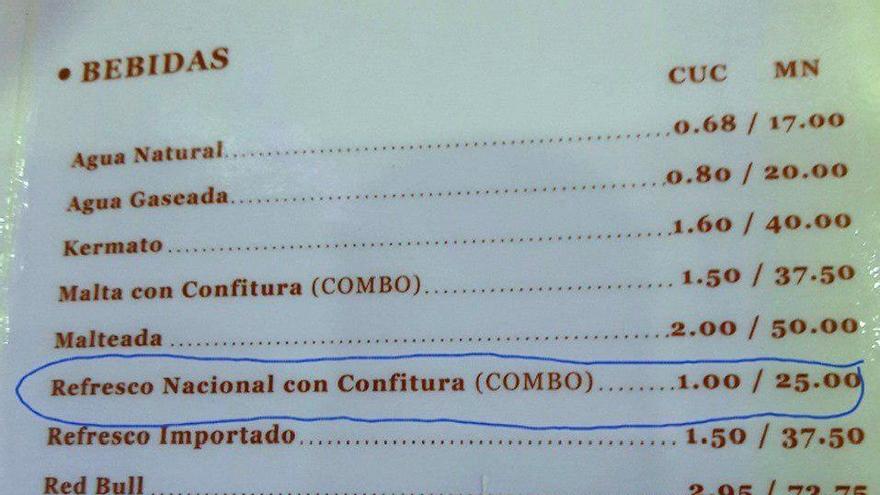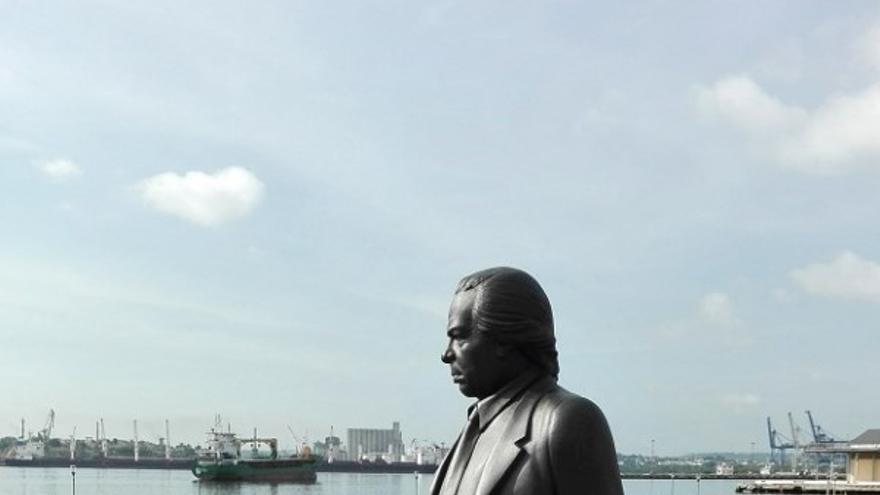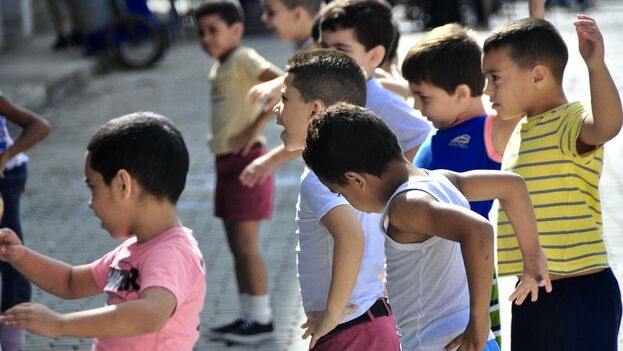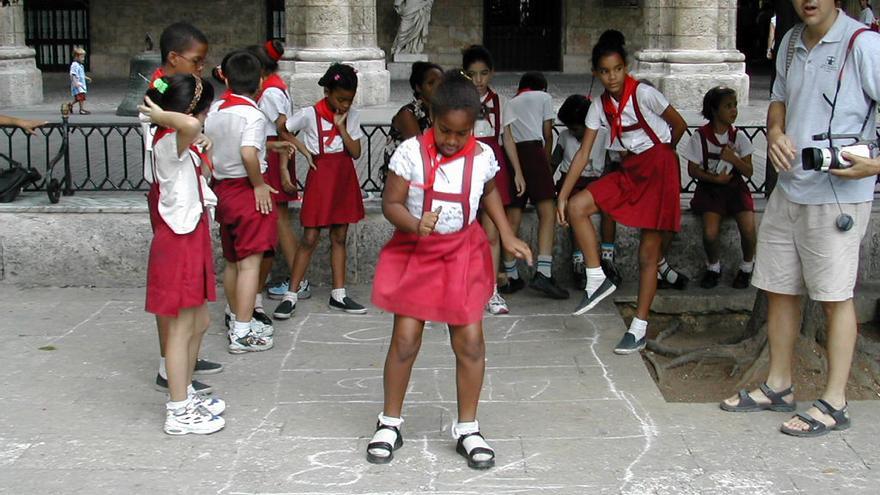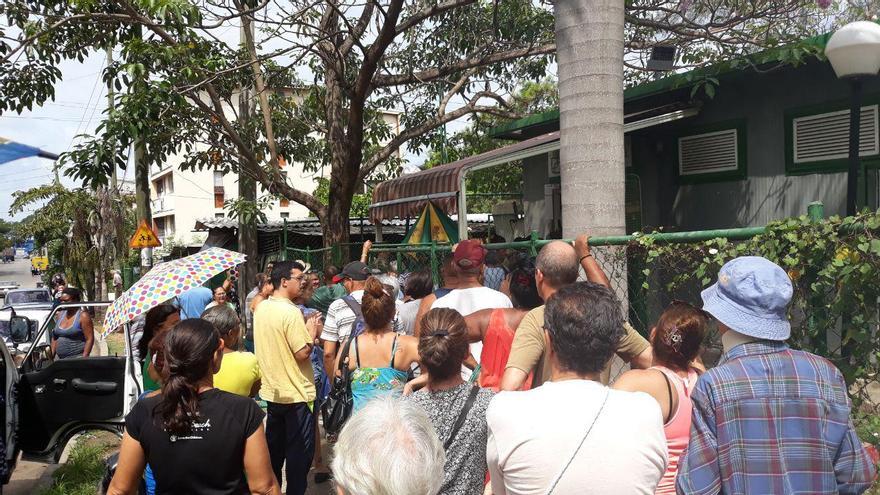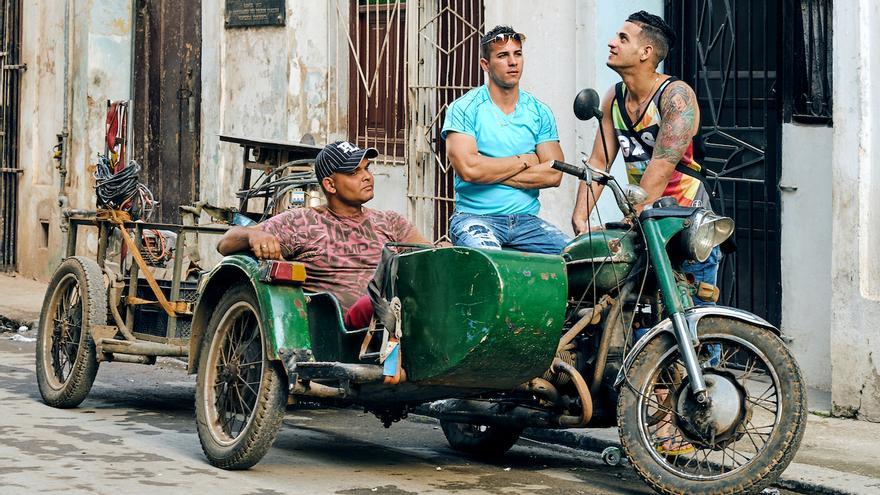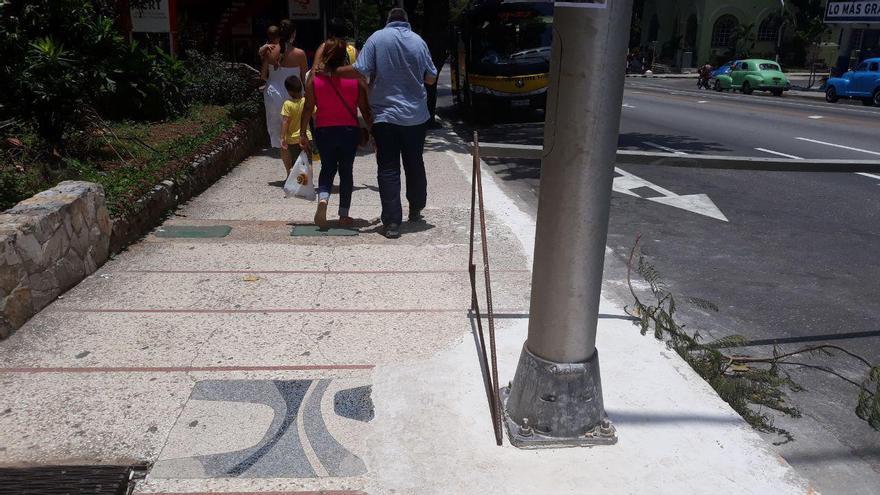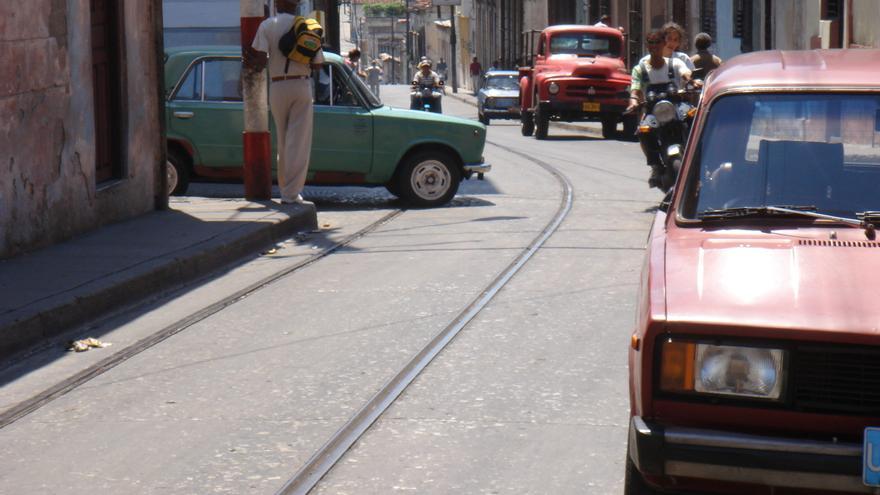“Since yesterday everyone has been looking at me with pity, like I had suffered a death in the family or an amputation. Life goes on and so does business,” says Joaquín, who has spent three of his 37 years traveling to Panama to bring back to the Island flat-screen TVs, automatic washing machines, and air conditioners, which now will become the monopoly of the Government.
The new measures announced on Tuesday seek to check the capital flight of those who, like these friends, were going to several countries in the region to buy merchandise to then resell them on the domestic black market. continue reading
Starting at the end of October there will be, thus, a parallel market in which only actually convertible currency can be used to pay, and which only those who have access to remittances or foreign currency will be able to benefit from.
Joaquín knows from experience that Cubans greatly distrust the State and that since there has been Internet access, “people know brands and prices and they aren’t going to let themselves get conned with ’made-in-I-don’t-know-where’ products.”
In the specific case of television sets, the State, he believes, has the moral obligation to bring those that comply with the frequency parameters “that are only used in Cuba and in two or three Asian countries,” and he wonders who wants to buy a flat-screen 48-inch TV to watch domestic programming. “Those who are going to buy good devices are already on Netflix or at least addicted to the weekly packet.”
Joaquín is hopeful that the State buyers will not have the necessary flexibility to attend to specific demands. “If they insist on bringing refrigerators of eleven cubic feet, which are only good for domestic use, we will offer others of twenty cubic feet, which are the ones needed for a bar or a private restaurant.”
But it still remains to be seen how these measures will be realized. “I have a restaurant and I need a professional coffeemaker and also a mixer that until now I have not been able to bring back from a trip, because they say that they are professional machines and they don’t count as personal imports,” explains Pablo Armando, an entrepreneur with an Italian food place in Havana.
“Will the state-owned import businesses authorized for us to order products from include these types of machine and devices in the catalogue of what they can bring?” asks the self-employed man. “And if one day I have to import flour or parmesan cheese that way, will they allow me?” For now, Pablo Armando continues working with an old coffeemaker that he bought secondhand on the informal market from a French diplomat who finished his mission on the island.
“The majority of us businesses have been able to open because we buy from the mules and I don’t know if the State can really compete with them when it comes to variety of supply, because the Government has a lot of barriers and limitations on what cannot be sold or owned,” he warns. “For example, will they allow a farmer to import a tractor, a stockbreeder to bring semen for insemination, or a shoemaker to import leather? No one knows.”
Modesto, Joaquín’s brother-in-law, is also a mule and has, at 47, another perspective. “What worries me is that the dollar is becoming very expensive and almost all the merchandise that we bring, we sell in CUC.” They then have to change the sales profits into dollars to continue buying in Panama. “If the dollar continues to exchange at 1.50, as they are speculating, our business is finished.”
Although he is not an economist, Modesto believes that if the Government plans to invest the money obtained in these sales in promoting national industry, only two things can happen. “Either they’ll end up without funds to continue buying, or they will have to wait many years to accumulate what is required to finance industry, which is on the floor. It strikes me that these measures have not been announced as an experiment,” he says after a pause.
Economists also have doubts about the effect of these measures. For Mauricio de Miranda Parrondo, a Cuban academic located in Colombia, the State has decided to reinforce its monopolistic capacity and compete with the self-employed with tariffs and other advantages that they do not have. Additionally he has shown that the CUC or convertible peso is not such, given that they will now allow the circulation of currency.
“Despite the insistence that they are measures meant to benefit the population, it’s worth asking how the population can access a market which only accepts dollars if their salaries are paid in Cuban pesos and total salaries would hardly be enough to approach said markets,” he wonders.
The economist believes that “the Cuban Government prefers to continue betting on unilateral transfers of resources from abroad and not on the creation of national wealth via the productive work of society.”
Meanwhile, official voices came out in support of the measures. “The resale of ACs and motorbikes is over, the businesses of salesmen in dollars fail, and Cuba attracts currency for the development of the economy,” said the national television journalist Lázaro Manuel Alonso on his Facebook account.
Luis Silva, the actor and comedian who plays the popular character Pánfilo, believes that the flourishing of the mules is fundamentally due to the elevated prices that some products have had on the retail market. “Cubans have sold ACs for 700 CUC when our State sells them for 1,000, 1,200, and 1,500. Resale?” asked the actor.
Among the commentators on the official statement, many doubt the effects of the measure. “If they have not been able to maintain a stable supply of those products until now, what guarantee is there that after a week the ACs and TVs won’t be gone?” asks Juan Marrero, one of the readers.
From now until October 20, when the new measure goes into effect, there is little time left to improvise. Joaquín and Modesto already have their tickets to go to the Colón Free Zone in Panama with a list of orders from their clients. Between the optimism of one and the restraint of the other, there is enough space for imagination and uncertainty.
Translated by: Sheilagh Herrera
____________________________
The 14ymedio team is committed to serious journalism that reflects the reality of deep Cuba. Thank you for joining us on this long road. We invite you to continue supporting us, but this time by becoming a member of 14ymedio. Together we can continue to transform journalism in Cuba.
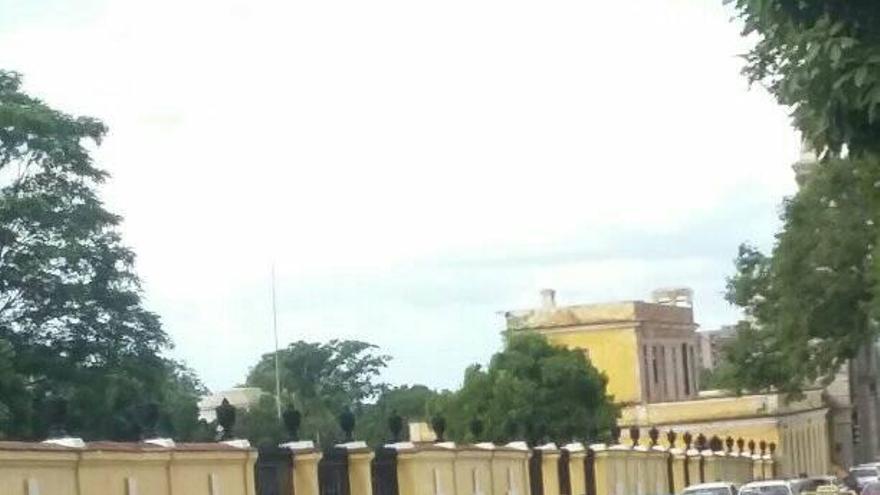
![]() 14ymedio, Marcelo Hernández, Havana, 8 November 2019 — In the last week the long lines have returned to the gas stations in Havana, but this time without prior official announcement of a bad energy “temporary situation” or of an oil ship that is late reaching the island. The deficit has not been accompanied by appearances of ministers on television, speeches by Miguel Díaz-Canel or newspaper headlines calling on Cubans to “resist.” It is a shortage without narrative.
14ymedio, Marcelo Hernández, Havana, 8 November 2019 — In the last week the long lines have returned to the gas stations in Havana, but this time without prior official announcement of a bad energy “temporary situation” or of an oil ship that is late reaching the island. The deficit has not been accompanied by appearances of ministers on television, speeches by Miguel Díaz-Canel or newspaper headlines calling on Cubans to “resist.” It is a shortage without narrative.
